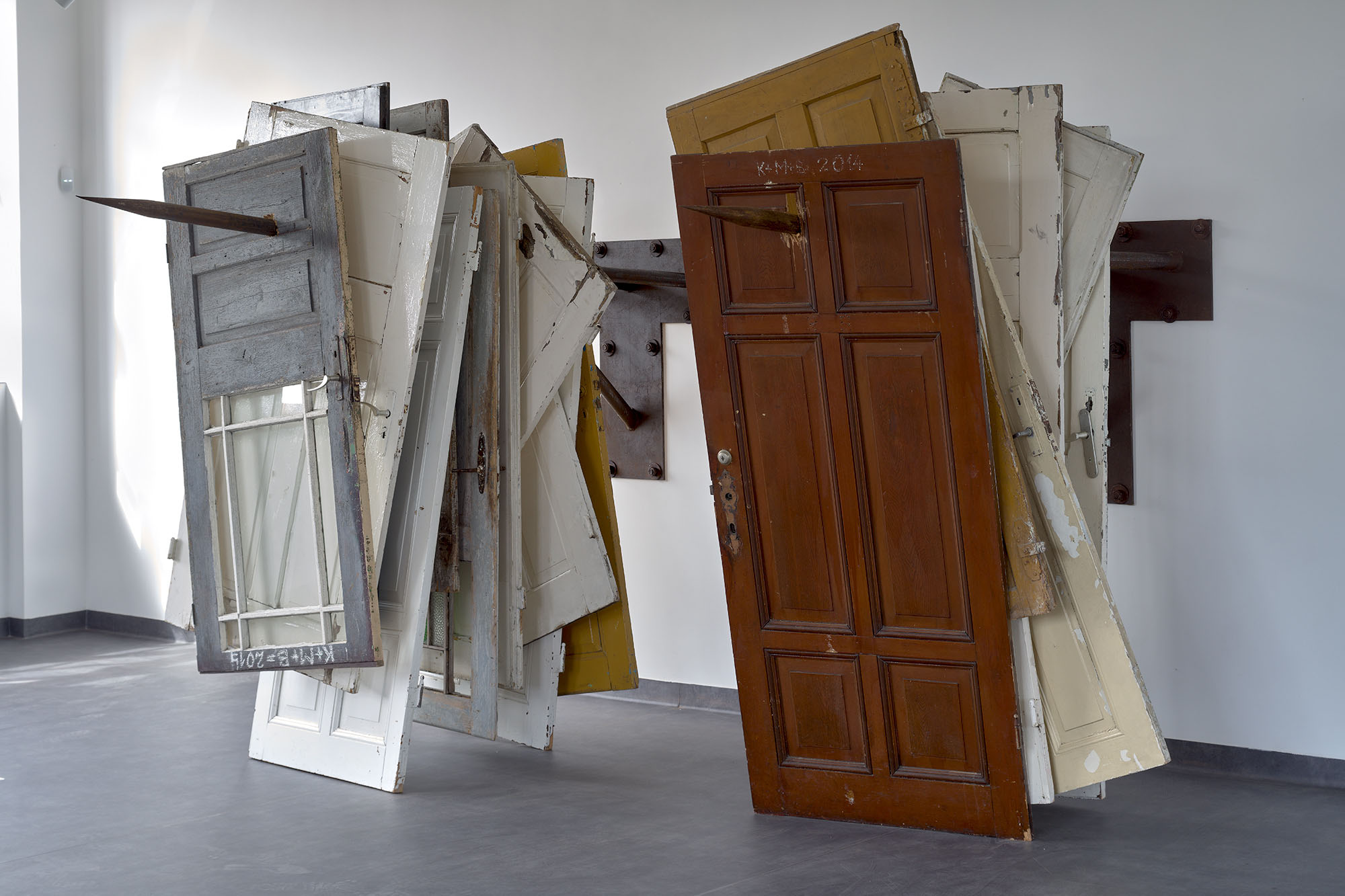Dorota Nieznalska obtained wooden doors from houses and flats inhabited completely or mostly by the German population until 1945. The installation is accompanied by a black and white sound film featuring archival images and texts about the displacement of the German population from the socalled Regained Territories, that is, the western and northern part of today’s Poland, in the years 1945–1950.
Although the subject of the work is the displacement of Germans following WWII, it can be interpreted in the context of the contemporary refugee migrations around the world. Using the term Heimat, which in German means the land of the fathers, the artist attempted to define the literal loss of the family home and land as a result of an armed conflict.
Meanwhile, the documentary shots featured in the film can be easily confused with images of the wartime exile of the Polish population – showing families with children and all their belongings, driving and walking in difficult weather conditions.
Nieznalska calls for the commemoration of civilian victims, exiled and expelled, uprooted from their homelands, people whose fate has placed them on the wrong side of the conflict. The individual narratives are described as universal in relation to people’s entanglement in political and religious systems.





